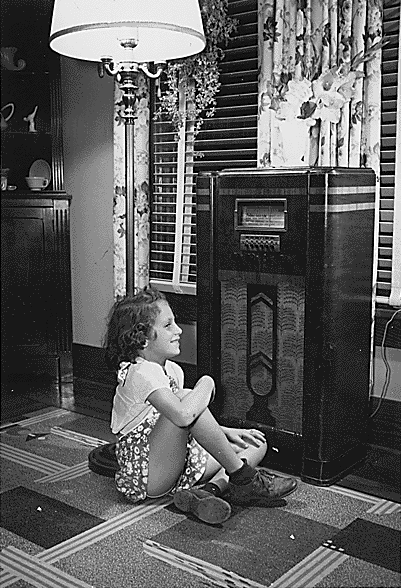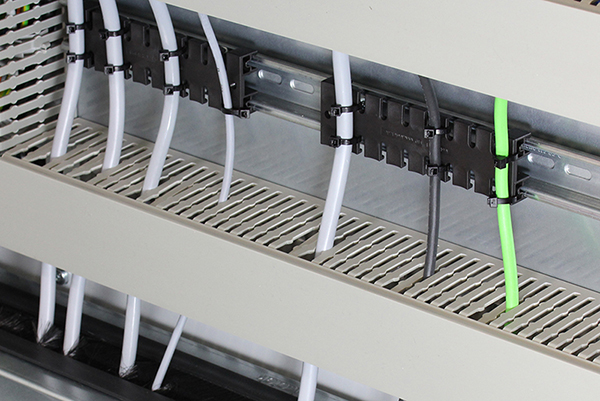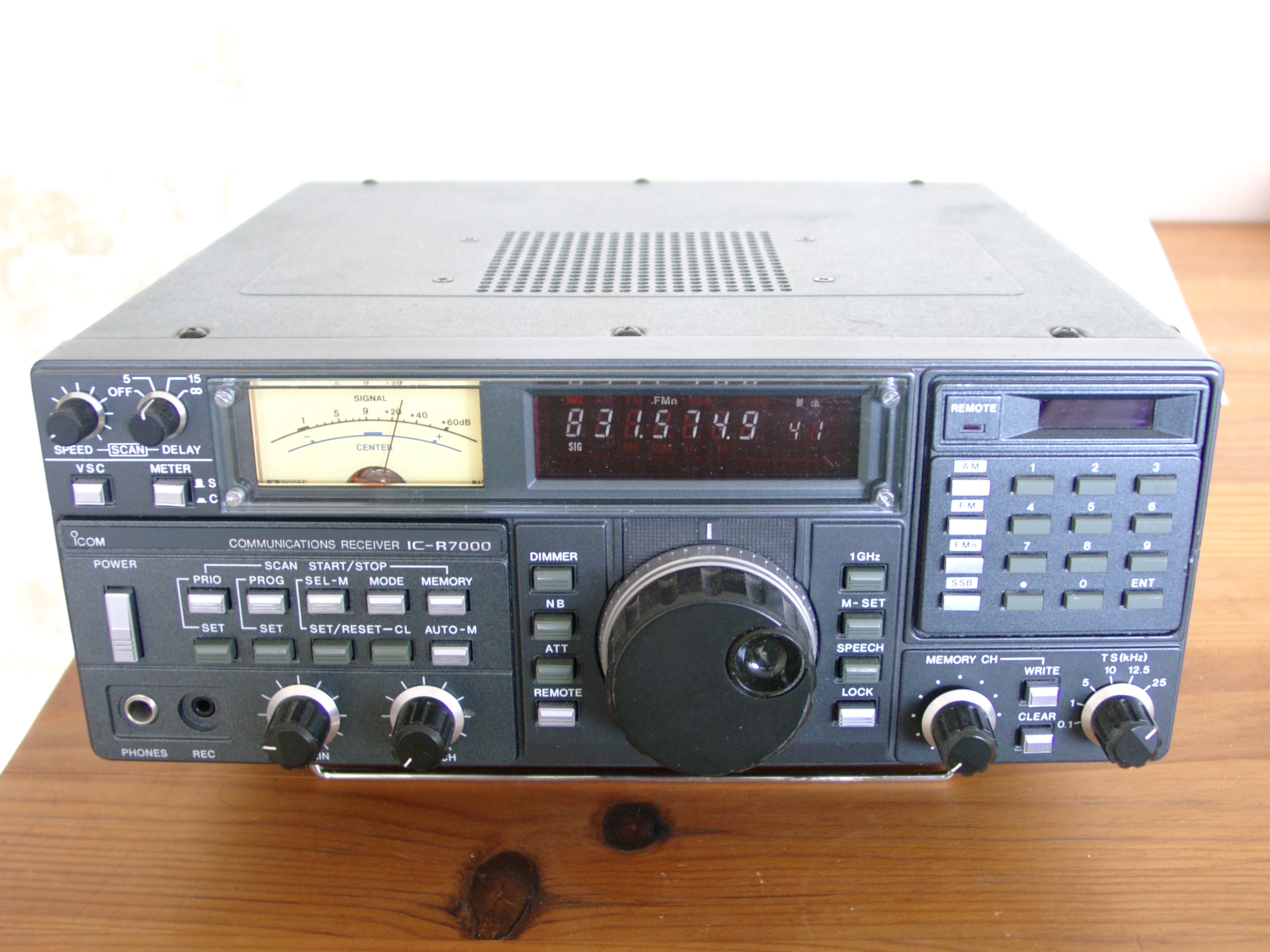|
Wife Approval Factor
Wife acceptance factor, wife approval factor, or wife appeal factor (WAF) is an assessment of design elements that either increase or diminish the likelihood a wife will approve the purchase of expensive consumer electronics products such as high fidelity loudspeakers and home theater systems. WAF is a tongue-in-cheek play on electronics jargon such as " form factor" and "power factor" and derives from the stereotype that men are predisposed to appreciate gadgetry and performance criteria whereas women must be wooed by visual and aesthetic factors. The term is considered a sexist term by some people, for example women in the high fidelity hobbyist community, who have stated the sexism in the community is reflected by use of the phrase WAF. Some people have used the non-gender-specific term significant other acceptance parameters (SOAP). History Radio At the start of the golden age of radio in the early 1920s, most radio broadcasters and listeners were men with technical skills ... [...More Info...] [...Related Items...] OR: [Wikipedia] [Google] [Baidu] |
Design
A design is the concept or proposal for an object, process, or system. The word ''design'' refers to something that is or has been intentionally created by a thinking agent, and is sometimes used to refer to the inherent nature of something – its design. The verb ''to design'' expresses the process of developing a design. In some cases, the direct construction of an object without an explicit prior plan may also be considered to be a design (such as in arts and crafts). A design is expected to have a purpose within a specific context, typically aiming to satisfy certain goals and constraints while taking into account aesthetic, functional and experiential considerations. Traditional examples of designs are architectural and engineering drawings, circuit diagrams, sewing patterns, and less tangible artefacts such as business process models.Dictionary meanings in the /dictionary.cambridge.org/dictionary/english/design Cambridge Dictionary of American English at /www. ... [...More Info...] [...Related Items...] OR: [Wikipedia] [Google] [Baidu] |
Golden Age Of Radio
The Golden Age of Radio, also known as the old-time radio (OTR) era, was an era of radio in the United States where it was the dominant electronic home entertainment medium. It began with the birth of commercial radio broadcasting in the early 1920s and lasted through the 1950s, when television superseded radio as the medium of choice for scripted programming, variety and dramatic shows. Radio was the first broadcast medium, and during this period people regularly tuned in to their favorite radio programs, and families gathered to listen to the home radio in the evening. According to a 1947 C. E. Hooper survey, 82 out of 100 Americans were found to be radio listeners. A variety of new entertainment formats and genres were created for the new medium, many of which later migrated to television: radio plays, mystery serials, soap operas, quiz shows, talent shows, daytime and evening variety hours, situation comedies, play-by-play sports, children's shows, cooking show ... [...More Info...] [...Related Items...] OR: [Wikipedia] [Google] [Baidu] |
Table Radio
A table radio is a small, self-contained radio receiver used as an entertainment device. Most such receivers are limited to radio functions, though some have compact disc or audio cassette players and clock radio functions built in; some models also include shortwave or satellite radio functionality. Though generally compact in design, table radios are not necessarily intended to be portable in the manner of a boom box. Many can run on battery power, however, making them useful as emergency radios. Some with CD functionality traditionally have top loading CD players but more recently can have front loading CD players. History Although some households owned one or more sophisticated table radios or console models with shortwave and radio-phonograph combinations as early as the 1920s, table radios offered in various cabinet materials and designs at an assortment of prices from $10 to over $100 proliferated in the 1930s. They were characterized by relatively high fidelity sound, ... [...More Info...] [...Related Items...] OR: [Wikipedia] [Google] [Baidu] |
Philco
Philco (an acronym for Philadelphia Battery Company) is an American electronics industry, electronics manufacturer headquartered in Philadelphia. Philco was a pioneer in battery, radio, and television production. In 1961, the company was purchased by Ford Motor Company, Ford and, from 1966, renamed "Philco-Ford". Ford sold the company to GTE in 1974, and it was purchased by North American Philips, Philips in 1981, which became a subsidiary of the Dutch company Philips in 1987. In North America, the Philco brand is owned by Philips. In other markets, the Philco International brand is owned by Electrolux. In the early 1920s, Philco made storage batteries, "socket power" battery eliminator units (plug-in transformers), and battery chargers. With the invention of the rectifier tube, which made it practical to power radios by electrical outlets, in 1928, Philco entered the radio business. They followed other radio makers such as RCA, Atwater-Kent, Zenith Electronics, Freshman Masterpie ... [...More Info...] [...Related Items...] OR: [Wikipedia] [Google] [Baidu] |
AC Power
In an electric circuit, instantaneous power is the time rate of flow of energy past a given point of the circuit. In alternating current circuits, energy storage elements such as inductors and capacitors may result in periodic reversals of the direction of energy flow. Its SI unit is the watt. The portion of instantaneous power that, averaged over a complete cycle of the AC waveform, results in net transfer of energy in one direction is known as instantaneous active power, and its time average is known as active power or real power. The portion of instantaneous power that results in no net transfer of energy but instead oscillates between the source and load in each cycle due to stored energy is known as instantaneous reactive power, and its amplitude is the absolute value of reactive power. Active, reactive, apparent, and complex power in sinusoidal steady-state For a simple alternating current (AC) circuit in steady-state; consisting of a source and a Linear circuit, linear T ... [...More Info...] [...Related Items...] OR: [Wikipedia] [Google] [Baidu] |
Batteryless Radio
A batteryless radio is a type of radio receiver that does not require the use of a battery (electricity), battery to provide it with electrical power. Originally this referred to units which could be used directly by AC mains supply (mains radio); it can also refer to units which do not require a power source at all, except for the power that they receive from an ambient radio source, such as radio waves. History The earliest amplifying radios, vacuum tube radios, used Electric battery, batteries until the mid to late 1920s. The line-operated vacuum tube receiver was invented in 1925 by Edward S. Rogers, Sr. The unit operated with five Rogers vacuum tube#AC power, AC vacuum tubes and the Rogers battery eliminator, Battery-Eliminator Power Unit (power supply). This unit was later marketed for $120 as "Type 120". He established the Toronto station CFRB (an abbreviation of ''Canada's First Rogers Batteryless'') to promote sales of the product. Batteryless radios were not introdu ... [...More Info...] [...Related Items...] OR: [Wikipedia] [Google] [Baidu] |
Cable Spaghetti
Cable management refers to management of electrical or optical cable in a cabinet or an installation. The term is used for products, workmanship or planning. Cables can easily become tangled, making them difficult to work with, sometimes resulting in devices accidentally becoming unplugged as one attempts to move a cable. Such cases are known as "cable spaghetti", and any kind of problem diagnosis and future updates to such enclosures could be very difficult. Cable management both supports and contains cables during installation, and makes subsequent maintenance or changes to the cable system easier. Products such as cable trays, cable ladders, and cable baskets are used to support a cable through cabling routes. Cable selection The choice of cables is also important; for instance, ribbon cables used to connect Parallel ATA drives to the motherboard can disrupt the airflow inside of computers, making case fans less effective; most SATA cables are more compact and therefo ... [...More Info...] [...Related Items...] OR: [Wikipedia] [Google] [Baidu] |
Battery Acid
Sulfuric acid (American spelling and the preferred IUPAC name) or sulphuric acid (English in the Commonwealth of Nations, Commonwealth spelling), known in antiquity as oil of vitriol, is a mineral acid composed of the elements sulfur, oxygen, and hydrogen, with the molecular formula . It is a colorless, odorless, and Viscosity, viscous liquid that is Miscibility, miscible with water. Pure sulfuric acid does not occur naturally due to its Dehydration reaction, strong affinity to water vapor; it is Hygroscopy, hygroscopic and readily absorbs water vapor from the Atmosphere of Earth, air. Concentrated sulfuric acid is a strong oxidant with powerful dehydrating properties, making it highly corrosive towards other materials, from rocks to metals. Phosphorus pentoxide is a notable exception in that it is not dehydrated by sulfuric acid but, to the contrary, dehydrates sulfuric acid to sulfur trioxide. Upon addition of sulfuric acid to water, a considerable amount of heat is releas ... [...More Info...] [...Related Items...] OR: [Wikipedia] [Google] [Baidu] |
Wet-cell Batteries
An electric battery is a source of electric power consisting of one or more electrochemical cells with external connections for powering electrical devices. When a battery is supplying power, its positive terminal is the cathode and its negative terminal is the anode. The terminal marked negative is the source of electrons. When a battery is connected to an external electric load, those negatively charged electrons flow through the circuit and reach the positive terminal, thus causing a redox reaction by attracting positively charged ions, or cations. Thus, higher energy reactants are converted to lower energy products, and the free-energy difference is delivered to the external circuit as electrical energy. Historically the term "battery" specifically referred to a device composed of multiple cells; however, the usage has evolved to include devices composed of a single cell. Primary (single-use or "disposable") batteries are used once and discarded, as the electrode materia ... [...More Info...] [...Related Items...] OR: [Wikipedia] [Google] [Baidu] |
Radio Receiver
In radio communications, a radio receiver, also known as a receiver, a wireless, or simply a radio, is an electronic device that receives radio waves and converts the information carried by them to a usable form. It is used with an antenna. The antenna intercepts radio waves (electromagnetic waves of radio frequency) and converts them to tiny alternating currents which are applied to the receiver, and the receiver extracts the desired information. The receiver uses electronic filters to separate the desired radio frequency signal from all the other signals picked up by the antenna, an electronic amplifier to increase the power of the signal for further processing, and finally recovers the desired information through demodulation. Radio receivers are essential components of all systems based on radio technology. The information produced by the receiver may be in the form of sound, video (television), or digital data. A radio receiver may be a separate piece of electronic equ ... [...More Info...] [...Related Items...] OR: [Wikipedia] [Google] [Baidu] |
Radio News
''Radio News'' was an American monthly technology magazine published from 1919 to 1971. The magazine was started by Hugo Gernsback as a magazine for amateur radio enthusiasts, but it evolved to cover all the technical aspects to radio and electronics. In 1929, a bankruptcy forced the sale of Gernsback's publishing company to B. A. Mackinnon. In 1938, Ziff Davis, Ziff-Davis Publishing acquired the magazines. Gernsback Era In 1904 Hugo Gernsback established Electro Importing Company to sell radio components and electrical supplies by mail order. The catalogs had detailed instructions on projects like a wireless telegraph outfit and were the predecessor of his first magazine, ''Modern Electrics'' (April 1908). In May 1913 he started another magazine, ''The Electrical Experimenter''. The magazines would have Gernsback's bold predictions of the future as well as fiction. In 1926, he started the magazine ''Amazing Stories'' and coined the term "scientifiction" which became science fi ... [...More Info...] [...Related Items...] OR: [Wikipedia] [Google] [Baidu] |







